


 الفيزياء الكلاسيكية
الفيزياء الكلاسيكية
 الكهربائية والمغناطيسية
الكهربائية والمغناطيسية
 علم البصريات
علم البصريات
 الفيزياء الحديثة
الفيزياء الحديثة
 النظرية النسبية
النظرية النسبية
 الفيزياء النووية
الفيزياء النووية
 فيزياء الحالة الصلبة
فيزياء الحالة الصلبة
 الليزر
الليزر
 علم الفلك
علم الفلك
 المجموعة الشمسية
المجموعة الشمسية
 الطاقة البديلة
الطاقة البديلة
 الفيزياء والعلوم الأخرى
الفيزياء والعلوم الأخرى
 مواضيع عامة في الفيزياء
مواضيع عامة في الفيزياء|
Read More
Date: 30-8-2016
Date: 25-8-2016
Date: 22-8-2016
|
Constant Matrix Perturbation
Consider a system described by a Hamiltonian
 (i)
(i)
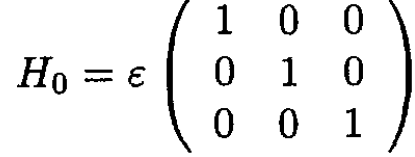 (ii)
(ii)
 (iii)
(iii)
where and G are positive.
a) Find the eigenvalues and eigenvectors of this Hamiltonian.
b) Consider the two states
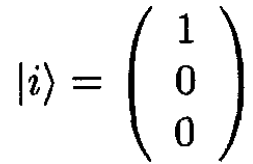 (iiii)
(iiii)
 (iiiii)
(iiiii)
At t = 0, the system is in state |i⟩. Derive the probability that at any later time it is in state |f ⟩.
SOLUTION
a) Define x = ε – λ – G where λ is the eigenvalue. We wish to diagonalize the matrix by finding the determinant of
 (1)
(1)
 (2)
(2)
When confronted by a cubic eigenvalue equation, it is best first to try to guess an eigenvalue. The obvious guesses are x = ±G. The one that works is x = -G, so we factor this out to get
 (3)
(3)
 (4)
(4)
 (5)
(5)
We call these eigenvalues λ1, λ2, λ3, respectively. When we construct the eigenfunctions, only the one for λ3 is unique. Since the first two have degenerate eigenvalues, their eigenvectors can be constructed in many different ways. One choice is
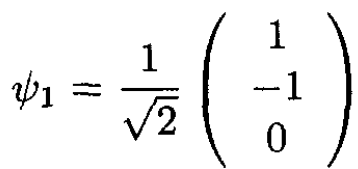 (6)
(6)
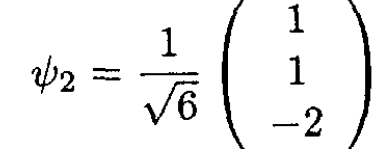 (7)
(7)
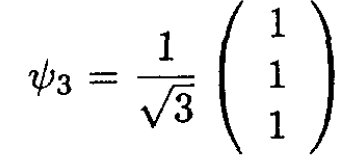 (8)
(8)
b) Since the three states ѱi form a complete set over this space, we can expand the initial state as
 (9)
(9)
 (10)
(10)
 (11)
(11)
 (12)
(12)
To find the amplitude in state |f ⟩ we operate on the above equation with ⟨f |. The probability P is found from the absolute-magnitude-squared of this amplitude:
 (13)
(13)
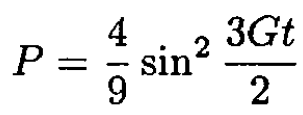 (14)
(14)



|
|
|
|
مخاطر عدم علاج ارتفاع ضغط الدم
|
|
|
|
|
|
|
اختراق جديد في علاج سرطان البروستات العدواني
|
|
|
|
|
|
|
مدرسة دار العلم.. صرح علميّ متميز في كربلاء لنشر علوم أهل البيت (عليهم السلام)
|
|
|